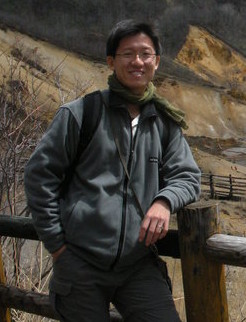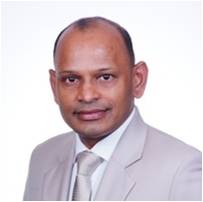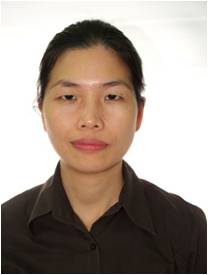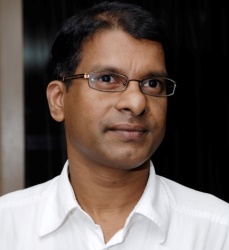Advisors and Technologists

|
Mr Wee-Eong Teo, Founder and Advisor
Competency: Electrospinning Setups, Scaffold for tissue regeneration, Medical Device Product Development Regulatory Affairs Wee-Eong Teo is one of the pioneers in extending the capability of electrospinning to construct unique nanofibrous structures. Notable achivements include developing setups for fabricating nanofibrous tube with controlled fiber alignment, fabrication of continuous nanofiber yarns and three-dimensional nanofiber blocks. He has shown that a dynamic fluid collector is able to modify the resultant electrospun nanofiber structure. His interest in biomedical devices led to the development of unique nanofibers structures for use as vascular graft, peripheral nerve regeneration graft, bone graft, soft tissue scaffold and nanofiber coating for stents. Wee Eong believes in the sharing of scientific knowledge and he has published over 20 peered reviewed articles. He has also mentored several students and junior researchers. He is also the co-author of the widely used text book "An Introduction to Electrospinning and Nanofibers" and his reviews are some of the most accessed papers in their respective journals. |

|
Prof Seeram Ramakrishna, Advisor
Competency: Electrospinning, Environment, Energy, Regenerative medicine Prof Seeram Ramakrishna, PE, FREng is well known to the worldwide community of electrospinners and materials. He advances science and engineering of nanomaterials for innovations in areas of societal importance. He is a professor of materials engineering and Director of Center for Nanofibers & Nanotechnology (http://serve.me.nus.edu.sg/seeram_ramakrishna/) at the National University of Singapore. He is a Highly Cited Materials Scientist. He authored 6 books (http://serve.me.nus.edu.sg/seeram_ramakrishna/Books/books.html) and ~ 600 journal papers (http://scholar.google.com.sg/citations?user=c9Tu-9AAAAAJ&hl=en) which attracted ~ 31,000 citations and 82 H-index. He is on the editorial boards of ~ 10 international journals. Companies Biomers (http://simpliclear.com/) and Electrospunra (http://www.electrospunra.com/#page_2/) have roots in the technologies nurtured at his labs. He received academic training from Cambridge and Harvard Universities. He is an elected international fellow of Royal Academy of Engineering, UK; National Academy of Engineering, India; Institution of Engineers Singapore; ASEAN Academy of Engineering & Technology; American Association of the Advancement of Science; ASM International; American Society for Mechanical Engineers; American Institute for Medical & Biological Engineering; Institution of Mechanical Engineers, UK; and Institute of Materials, Minerals & Mining, UK. He served on the management boards of several national and international organizations, and advices companies worldwide. He is an analyst & speaker at the meetings facilitated by UNESCO, World Bank, OECD, EU, ASEAN, Governments, Universities, and professional organizations around the world. His global contributions include Founder of Global Engineering Deans Council (www.gedc.org); Global Observatory for Learning; Vice-President of International Federation of Engineering Education Societies (IFEES); Board Member of Asia Society for Innovation & Policy (ASIP); and Council Member of Institution of Engineers Singapore (IES).His university leadership includes National University of Singapore (NUS) Vice-President for Research Strategy; Dean of Faculty of Engineering. |

|
Dr Susan Liao, Advisor
Competency: Electrospinning, Biomineralization, Scaffold for tissue regeneration Dr Susan Liao obtained her Ph.D in Materials Science & Engineering from Tsinghua University in 2003. After that, she moved into Hokkaido University, School of Dentistry to conduct independent research work funded by JSPS fellowship in Japan. She came to National University of Singapore with prestigious Lee Kuan Yew Fellowship in 2006 and joined Nanyang Technological University as Senior Research Fellow and Program Manager in 2010. She is known for her pioneering work on biomimetic nanocomposite scaffold for tissue engineering and intensive experiences on biomedical applications of electrospun nanofibers. She has around eighty peer-reviewed journal/book chapter publications and seven patents, and her h index is 23 according to Scopus. Meanwhile she is serving as editorial board member and reviewer for several biomaterials related journals. |

|
Dr Kent Chan, Advisor
Competency: Coaxial Electrospinning, Single Fiber Testing, Conductive Electrospun Nanofibers Dr Kent Chan's experience with electrospinning started in the Engineering Faculty at National University of Singapore when he was in his final year of undergraduate studies. He pursued his study on electrospinning in Kyoto Institute of Technology under the guidance of A.Professor Masaya Kotaki. As a postgraduate and later, as a researcher, he has worked with local electrospinning setup manufacturers such as MECC (Nanon), Katotech and Elmarco Pte Ltd in developing and exploring their electrospinning setups. |

|
Prof Rajan Jose , Advisor
Competency: metal oxide nanowires, metal nanowires, structure - property correlation, solution processed solar cells, supercapacitors Dr. Rajan Jose is a Professor of Materials Science and Engineering at the Faculty of Industrial Sciences & Technology, Universiti Malaysia Pahang (UMP). He supervises the Nanostructured Renewable Energy Materials Laboratory in the UMP. He conducted his doctoral research at the Council of Scientific and Industrial Research (CSIR), Trivandrum, India and received PhD degree in the year 2002 for his work on nanostructured perovskite ceramics for microwave and superconducting electronics. He has worked at various capacities at the Indira Gandhi Centre for Atomic Research (India), AIST (Japan), Toyota Technological Institute (Japan), and the National University of Singapore (Singapore) before joining UMP. He has published over 120 papers in SCI journals which are cited over 3100 times. His research interests include nanostructured materials and renewable energy devices. |
 ElectrospinTech
ElectrospinTech